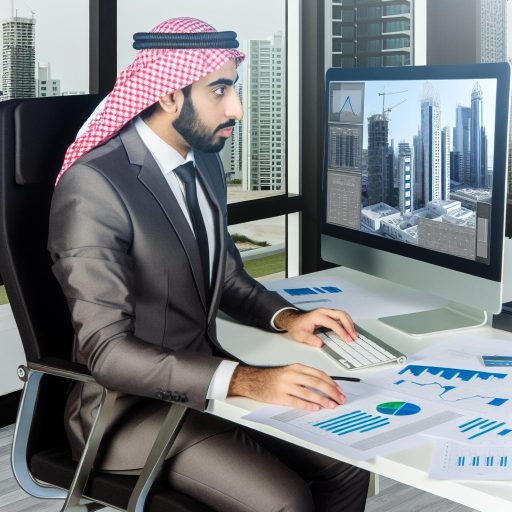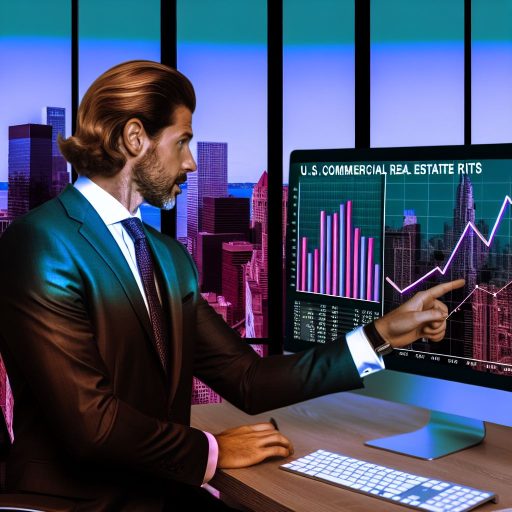Introduction to Green Financing and its Relevance to Commercial Real Estate
Green financing is an emerging trend in the financial sector.
It focuses on funding projects with positive environmental impacts.
This approach has significant implications for commercial real estate.
First, it encourages property owners to adopt sustainable practices.
As a result, buildings become energy-efficient and environmentally friendly.
Investors increasingly seek out green-certified properties.
This demand drives the value of eco-friendly assets higher.
Understanding the Concept of Green Financing
Green financing involves investments that support environmental goals.
This includes funding renewable energy projects and sustainable developments.
Financial products tailored for this purpose have surged in popularity.
Green bonds are one such example.
These bonds specifically fund environmentally beneficial projects.
Benefits of Green Financing in Commercial Real Estate
Green financing offers several advantages for commercial real estate.
First, it enhances the building’s marketability.
Properties that meet green standards attract more tenants.
Transform Your Real Estate Decisions
Unlock personalized real estate insights crafted just for you. Get actionable advice designed to amplify your success.
Get StartedAdditionally, these buildings generally have lower operating costs.
Energy-efficient features reduce utility expenses significantly.
Moreover, green financing leads to improved asset performance.
Investors often see higher returns with eco-friendly properties.
The Role of Government and Financial Institutions
Governments play a critical role in promoting green financing.
They provide incentives and subsidies to green projects.
This support encourages developers to pursue sustainability.
Furthermore, financial institutions are adapting their lending practices.
They are increasingly favoring projects that demonstrate environmental responsibility.
For instance, the Green Loan Principles guide financial institutions in this effort.
Challenges and Considerations
Despite its advantages, green financing faces challenges.
There is often a lack of awareness among investors.
Many property owners are uncertain about how to proceed with green projects.
Additionally, the initial costs can be a barrier to entry.
Showcase Your Real Estate Business
Publish your company profile on our blog for just $200. Gain instant exposure and connect with a dedicated audience of real estate professionals and enthusiasts.
Publish Your ProfileHowever, the long-term benefits often outweigh these concerns.
Education and awareness initiatives can help bridge this gap.
Overview of Current Trends in Commercial Real Estate Development
Emphasis on Sustainability
Commercial real estate development increasingly prioritizes sustainability.
Developers seek to incorporate eco-friendly practices into their projects.
This shift significantly influences project design and execution.
Moreover, energy-efficient buildings attract environmentally conscious tenants.
Growing Demand for Green Buildings
There is a rising demand for green buildings across various sectors.
Clients and investors prefer properties certified by recognized green standards.
LEED certification has become a popular benchmark in this area.
Many companies want to demonstrate their commitment to corporate social responsibility.
Investment in Proptech
Investors increasingly channel resources into proptech innovations.
These technologies enhance property management and tenant experiences.
Smart building systems are now commonplace in new developments.
Furthermore, data analytics help optimize energy use and operational efficiency.
Focus on Urbanization
Urbanization continues to shape the commercial real estate landscape.
Developers target urban areas with vibrant economies and growing populations.
This trend encourages mixed-use developments that attract diverse occupants.
Such projects often provide housing, office, and retail spaces in one location.
Change in Funding Sources
Financing for commercial real estate is evolving rapidly.
Green financing options are gaining popularity among developers.
These funds often come with favorable terms and conditions.
Additionally, institutional investors are increasingly considering green projects.
The Role of Green Financing in Sustainable Property Development
Understanding Green Financing
Green financing refers to investments aimed at environmentally friendly projects.
This approach supports initiatives that enhance sustainability and reduce carbon footprints.
Moreover, it includes funding for renewable energy, energy efficiency, and environmental conservation.
Advantages of Green Financing
Green financing offers numerous benefits for commercial real estate development.
First, it promotes access to lower-interest loans and incentives for sustainable projects.
Second, it enhances asset value by improving energy efficiency.
This improvement often leads to lower operational costs in the long run.
Additionally, it attracts environmentally conscious tenants and investors.
Showcase Your Real Estate Business
Publish your company profile on our blog for just $200. Gain instant exposure and connect with a dedicated audience of real estate professionals and enthusiasts.
Publish Your ProfileSustainable Development and Real Estate Trends
Current real estate trends increasingly emphasize sustainability and environmental impact.
Investors now prioritize properties with green certifications such as LEED or BREEAM.
These certifications demonstrate a commitment to sustainable practices.
Consequently, properties with green features often see faster leasing rates.
The Impact on Market Growth
Green financing significantly impacts the growth of the commercial real estate market.
It encourages developers to integrate eco-friendly practices into their projects.
Furthermore, this financing aids in meeting regulatory requirements related to the environment.
This alignment with regulations fosters public trust and enhances community relations.
Successful Case Studies
Several companies have successfully utilized green financing in their developments.
For example, EcoBuilts Inc. transformed an old warehouse into a modern, energy-efficient office space.
This project received funding through a green bond, showcasing the viability of sustainable development.
Another case involves GreenFields Development, which built residential units with solar panels and green roofs.
These innovations attracted a premium rent and showcased the market’s willingness to invest in sustainability.
Find Out More: Understanding Zoning Laws For Industrial Real Estate Development
Case Studies: Successful Green Financing Initiatives in Commercial Real Estate
Introduction to Green Financing
Green financing plays a crucial role in commercial real estate growth.
It supports projects that promote sustainability and reduce environmental impact.
As awareness of climate change grows, financing options have expanded greatly.
This creates opportunities for developers to invest in eco-friendly buildings.
Urban Development Projects
Cities increasingly adopt green financing for urban development initiatives.
One successful case is the Green Building Program in San Francisco.
This program incentivizes developers to construct energy-efficient buildings.
Consequently, this leads to reduced operating costs and lower emissions.
In 2020, the city reported a 15% increase in energy-efficient projects.
Innovative Financing Models
Various innovative financing models have emerged to support green buildings.
One notable initiative involves using Green Bonds.
These bonds fund environmentally friendly projects while offering tax incentives.
The New York State Energy Research and Development Authority utilizes this model.
Thus far, it has financed over $1 billion in green projects since 2017.
Commercial Retrofit Programs
Commercial retrofit programs are gaining traction through green financing.
For example, the Commercial Property Assessed Clean Energy (C-PACE) initiative showcases success.
Showcase Your Real Estate Business
Publish your company profile on our blog for just $200. Gain instant exposure and connect with a dedicated audience of real estate professionals and enthusiasts.
Publish Your ProfileThis program allows property owners to finance energy upgrades through property taxes.
A study showed that C-PACE projects increased property values by 20% on average.
Case Study: The Edge in Amsterdam
The Edge in Amsterdam is a prime example of successful green financing.
This building received the highest sustainability rating, BREEAM, with a score of 98.36%.
Additionally, it utilizes 100% renewable energy sources, including solar power.
Investment in green technologies led to a 30% reduction in energy use.
Implications of Green Financing
These case studies demonstrate that green financing drives real estate growth.
As investors become more conscious of sustainability, demand for green projects rises.
Ultimately, this trend not only benefits the environment but also enhances economic resilience.
Delve into the Subject: Commercial Real Estate Loan Types and Their Key Differences
Financial Benefits of Green Investments
Cost Savings Through Energy Efficiency
Green buildings often leverage energy-efficient technologies.
This reduces overall utility costs significantly.
For instance, LED lighting and high-efficiency HVAC systems lower energy consumption.
Moreover, building automation systems enhance energy management.
This leads to operational savings for property owners.
In addition, reduced energy demand can lead to lower rates from utility providers.
Overall, companies can expect significant savings over time.
Tax Incentives and Grants
Many governments offer tax incentives for green building investments.
This encouragement can substantially enhance return on investment.
For example, federal tax credits may apply to renewable energy installations.
Local governments often provide incentives for LEED certification.
Grants and rebates are available for energy-efficient upgrades.
These financial benefits make green financing appealing to investors.
Additionally, taking advantage of such incentives promotes sustainability.
Enhanced Property Value
Green properties tend to have higher market values over time.
Buyers are increasingly prioritizing sustainable features in their searches.
This demand allows developers to command higher prices.
Furthermore, green buildings often attract higher-quality tenants.
This leads to reduced vacancy rates and increased rental income.
Consequently, effective financing solutions converge on green investments.
Showcase Your Real Estate Business
Publish your company profile on our blog for just $200. Gain instant exposure and connect with a dedicated audience of real estate professionals and enthusiasts.
Publish Your ProfileThis trend contributes positively to overall commercial real estate growth.
Access to Innovative Financing Options
Green financing opens doors to innovative funding possibilities.
Green bonds have gained popularity for financing sustainable projects.
These financial instruments provide capital with lower interest rates.
Additionally, impact investors seek opportunities in sustainable real estate.
They often prioritize projects with clear environmental benefits.
This shift in investor focus enhances funding availability.
Consequently, developers can pursue greener and more innovative projects.
Find Out More: Multi-Family Housing Property Management Best Practices for Owners

Impact of Green Certifications on Property Valuation and Market Demand
Introduction to Green Certifications
Green certifications represent a significant trend in commercial real estate.
These certifications highlight properties’ sustainability features.
They appeal to environmentally-conscious buyers and tenants.
Valuation Benefits of Green Certifications
Properties with green certifications often see increased valuations.
Studies show that certified buildings can command higher rents.
Additionally, they typically have lower operating costs.
These factors contribute to a healthier return on investment.
Market Demand for Green Certified Properties
The demand for green certified properties is on the rise.
Tenants now prioritize sustainability when selecting office spaces.
A survey by EcoRealty Group reveals that 73% of tenants prefer green buildings.
This trend significantly affects market dynamics.
Investment Trends Influenced by Green Certifications
Investors increasingly seek properties with green certifications.
They recognize the long-term value associated with sustainable buildings.
Furthermore, green-certified properties often experience lower vacancy rates.
These aspects boost investor confidence and market participation.
Government Incentives and Support
Governments promote green certifications through incentives.
Tax breaks and grants often accompany such certifications.
These incentives further enhance property attractiveness.
Significant Influence of Green Certifications
Green certifications impact property valuation significantly.
They create a strong demand in the commercial real estate market.
Consequently, these certifications shape the growth of the entire sector.
Showcase Your Real Estate Business
Publish your company profile on our blog for just $200. Gain instant exposure and connect with a dedicated audience of real estate professionals and enthusiasts.
Publish Your ProfileGain More Insights: Energy Efficiency Technologies for Commercial Real Estate Owners
Challenges in Implementing Green Financing Solutions for Developers
Understanding the Complexity of Green Financing
Green financing involves various complexities that can hinder adoption.
Developers often face a learning curve regarding sustainable practices.
Additionally, financing structures may not always support eco-friendly projects.
The lack of standardized metrics complicates measurement and reporting.
Access to Financial Resources
Securing funding for green initiatives remains a principal challenge.
Many financial institutions are still hesitant to invest in green projects.
This skepticism can be due to perceived risks and uncertainties.
Consequently, developers may find fewer traditional financing options available.
Regulatory and Compliance Issues
Navigating the regulatory landscape presents significant hurdles for developers.
Compliance with varying local, state, and federal regulations is vital.
The frequent changes in laws may create confusion around obligations.
Moreover, securing necessary certifications often proves time-consuming.
High Upfront Costs
Initial capital requirements for green projects are typically higher.
Developers may hesitate to invest because of these upfront costs.
Despite long-term cost savings, short-term financial burdens can discourage action.
In many cases, investors seek quicker returns on their investments.
Market Demand and Consumer Awareness
The market for green commercial properties is still developing.
Many consumers are not fully aware of the benefits of sustainable buildings.
Consequently, demand for green properties may lag behind expectations.
Effective marketing strategies are essential to educate potential tenants.
Implications for Future Sustainability Efforts
Addressing these challenges is crucial for the growth of green financing.
Developers need support from financial institutions to overcome barriers.
Collaboration across sectors can spur innovation in sustainability.
Ultimately, embracing green financing will benefit both the environment and economy.
Future Outlook: The Evolution of Green Financing and Its Long-term Impact on the Industry
Trends Shaping Green Financing
Green financing continues to evolve rapidly within the commercial real estate sector.
Investors increasingly prioritize environmentally friendly projects.
As a result, financial instruments designed for green initiatives are gaining traction.
Green bonds, for example, have become popular funding tools.
These bonds empower developers to pursue energy-efficient building practices.
Showcase Your Real Estate Business
Publish your company profile on our blog for just $200. Gain instant exposure and connect with a dedicated audience of real estate professionals and enthusiasts.
Publish Your ProfileMoreover, regulatory changes are further incentivizing green investments.
Government initiatives are playing a significant role in promoting sustainability.
In addition, corporate environmental commitments have driven this trend.
Industry leaders are recognizing the importance of sustainable practices.
Challenges to Overcome
Despite the positive trends, challenges remain within the green financing landscape.
High implementation costs can deter potential investors.
Moreover, the lack of standardized assessment metrics complicates fund allocation.
This inconsistency may lead to doubts about project viability.
Consequently, many developers need guidance to navigate financing options.
Moreover, securing funding for innovative green projects requires strategic collaboration.
Partnerships between public and private sectors can help mitigate these issues.
The Role of Technology in Green Financing
Technology is transforming the green financing sector dramatically.
Innovative tools enhance transparency and efficiency in funding allocation.
For instance, blockchain technology promotes traceability of green bonds.
This traceability builds trust among investors and project developers.
Furthermore, data analytics optimize project assessments and funding decisions.
The advancements in construction technology streamline sustainable building processes.
As a result, these technologies improve the overall effectiveness of green financing.
Long-term Impact on Commercial Real Estate
The long-term impact of green financing on commercial real estate is profound.
Sustainable buildings attract a growing base of eco-conscious tenants.
Consequently, they tend to maintain higher occupancy rates over time.
Additionally, energy-efficient properties can lead to lower operational costs.
This ultimately enhances overall profitability for investors and developers.
Moreover, green certifications can elevate property values in competitive markets.
As industries continue to embrace sustainability, traditional financing models may shift.
Consequently, we may see a broader adoption of environmentally responsible practices.
The future of commercial real estate hinges on the continued evolution of green financing.
Additional Resources
Home | NAIOP | Commercial Real Estate Development Association




